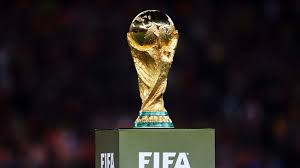By Andrew Warshaw in Zurich
January 10 – It’s official. Despite strong opposition from Europe’s clubs, the World Cup will be expanded to 48 teams as of 2026 after FIFA’s new ruling Council decided unanimously today to open up the finals to 16 more countries in a major victory for FIFA president Gianni Infantino.
A brief statement on FIFA’s Twitter account confirmed that the finals would comprise 16 groups of three, saying all further details would be provided following today’s ground-breaking Council session at FIFA headquarters.
FIFA’s sitting Council members (some were either unavailable to attend or have not yet been elected) had five options before them including increasing to 40 teams or retaining the finals at 32 participants.
But it seems they took little time in rubber-stamping Infantino’s preferred choice in what represents the biggest World Cup shakeup for a generation.
Under the 48-team format, the top two sides seem likely to qualify for a last-32 knockout stage, with 80 games in total, up from the current 64. But crucially the duration of the tournament is likely to remain at 32 days, a key counter-argument to the complaint by European clubs – who provide the bulk of the players – that too much additional pressure will be placed on their highly-paid stars.
One potential flaw, however, is that penalty shootouts may have to be introduced to settle drawn group matches in the event of countries deliberately manipulating results in the last series of first-round games to ensure both progress.
While Infantino would doubtless argue that he has delivered on his election manifesto promise to benefit smaller nations across the globe, critics will argue that expanding FIFA’s flagship tournament is purely a money-making exercise to provide badly needed additional revenue. A leaked FIFA-commissioned report examining the various options suggested a 48-team finals would generate an extra $1 billion in broadcasting and sponsorship, plus ticket sales.
Exactly where the 16 extra places will go now becomes the centre of debate, with a decision likely to be taken in principle before the FIFA Congress in May where the whole package will be approved. It is understood UEFA have been offered three more slots (up from 13) with the bulk of the rest expected to go to Africa and Asia.
This is the first time since the 1998 World Cup that changes have been made to the make-up of the tournament but there remain serious considerations, not least how to keep the CONMEBOL qualifying system competitive, given that seven of South America’s 10 member countries are likely to be handed slots in the finals. The idea of a merged CONMEBOL and CONCACAF qualifying system appears to have been made public prematurely and has been scrapped before it even got off the ground.
Once 2026 – which now seems even more certain to go to the United States, likely in combination with Canada and/or Mexico – is out of the way, on a global level it remains to be seen how many countries will have the facilities to stage an enlarged tournament. Infantino favours joint, or even multiple, hosting and that may well become de rigueur in the future, however unpalatable to the traditionalists.
But for Infantino, more opportunist than traditionalist, the proposed scenario could not have come at a better time.
With the ongoing US-led anti-corruption probe into FIFA-associated bigwigs showing no sign of ending and FIFA’s ethics committee still dishing out punishments to those guilty of lining their own pockets, Infantino has got exactly what he wants: more World Cup slots to keep his supporters sweet and help him provide the development cash he promised to national federations. The effect of which can only mean one thing: his hopes of re-election in 2019 being seriously enhanced.
Contact the writer of this story at moc.l1713929689labto1713929689ofdlr1713929689owedi1713929689sni@w1713929689ahsra1713929689w.wer1713929689dna1713929689

